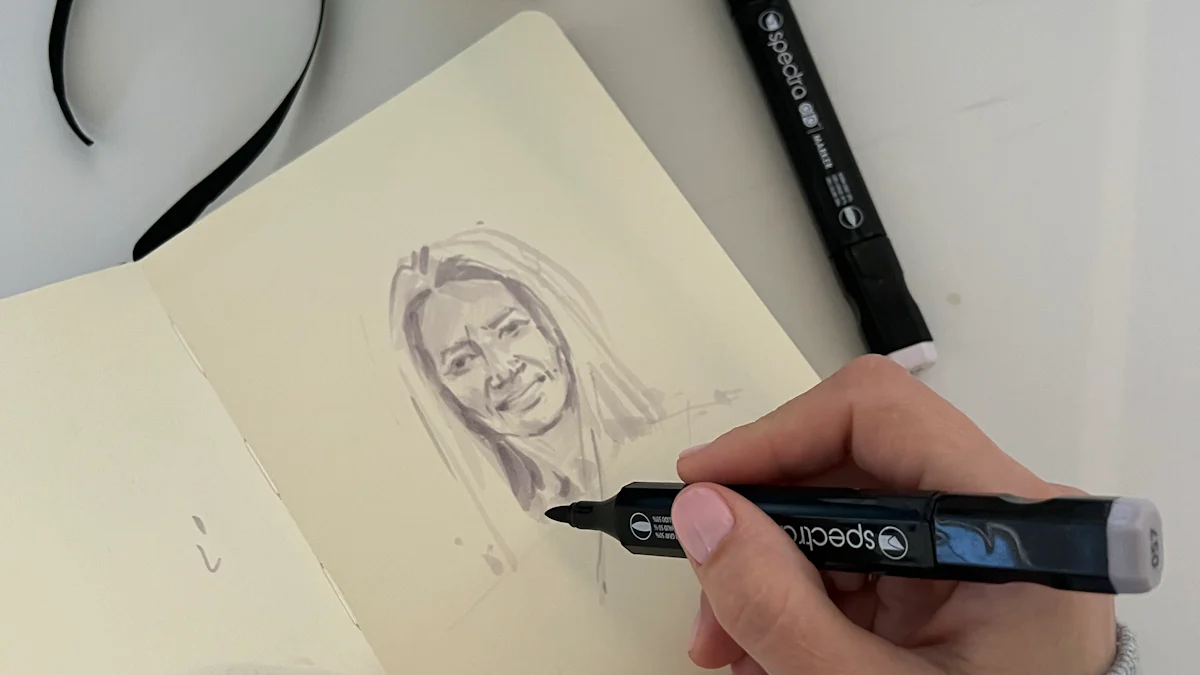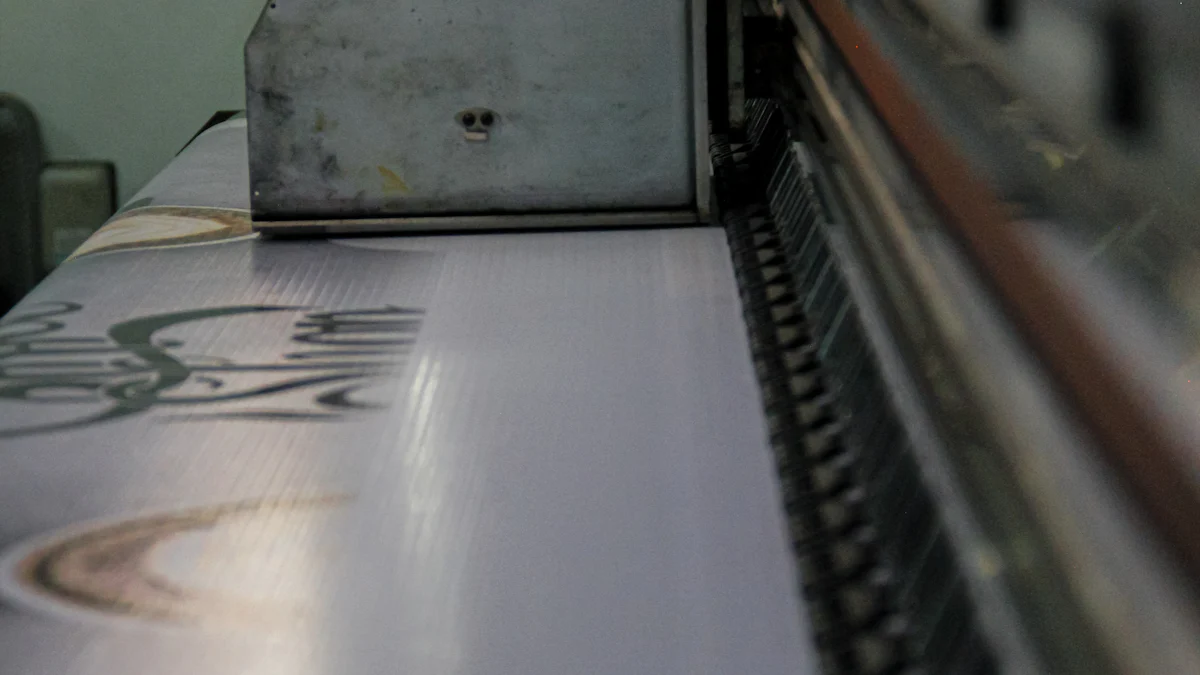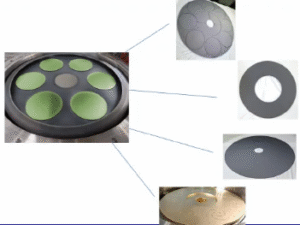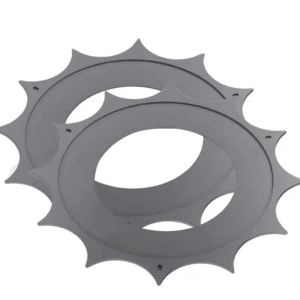
エッチングを通して芸術を作成することになると、あなたのプレートを選ぶ材料は、あなたの結果に著しく影響を与えることができます。 銅エッチングプレートは、比類のない精度と耐久性を提供し、複雑な設計に最適です。 一方、亜鉛プレートは、費用対効果の高い初心者向けのオプションを提供します。 あなたの決定は、細かい詳細、手頃な価格、または取り扱いの容易さを優先するかどうか、あなたの芸術的な目標と一致する必要があります。 それぞれの素材の強みを理解することで、クリエイティブな旅の正しい選択ができます.
要点
- 銅板は、優れた耐久性と精度を提供し、複雑な設計に焦点を当てたプロのアーティストに最適です.
- 亜鉛板は費用効果が大きい、初心者に適する選択、ちょうどエッチングで始まるそれらのために完成します.
- 素材を選ぶときは、あなたの芸術的な目標を考慮してください。銅で品質と長寿を優先するか、亜鉛での使用の手頃な価格と使いやすさを優先します.
- 銅板は、詳細を失うことなく複数のプリントを可能にし、亜鉛板はより速く劣化する可能性があります.
- 初心者にとって、亜鉛プレートは学習プロセスを簡素化し、高いコストの圧力なしで実験を可能にします.
- 銅板に投資すると、耐久性と品質の高い結果を生み出す能力により、長期的にお金を節約できます.
- 各素材の強みと限界を理解することで、クリエイティブな旅に適したエッチングプレートを選ぶことができます.
エッチングプレートを検討する主な要因
耐久性
耐久性はエッチングプレートを選択する際に重要な役割を果たします。 銅板は、この領域で圧迫します。 緻密な構造は、摩耗や涙に抵抗し、妥協することなく複数のプリントを作成することができます。 銅の強みは、繰り返し使用しても細かい詳細がそのまま残っていることを保証します。 一方、亜鉛板はより柔らかく、より傷にくくなります。 時間が経つにつれて、彼らは鋭いラインを作り出す能力を失うことがあります。 長期にわたるプロジェクトや重用途に耐えるプレートが必要な場合は、銅はより良い選択です.
コスト
コストは、特にあなたがエッチングに新しい場合は、あなたの決定に影響を与えることが多いです。 亜鉛版は銅版よりかなりより現実的です。 初心者や学生の技術を実験するための優れた選択肢です。 銅板は高価でありながら、高品質の結果を求める専門家に大きな価値を提供します。 予算の制約が懸念されている場合、亜鉛は費用対効果の高いソリューションを提供します。 しかし、精度と長寿を優先すると、銅に投資すると、長期的にお金を節約できます.
利用条件
使いやすさは、エッチングで全体的な経験に影響を及ぼす可能性があります。 亜鉛板はより柔らかい表面のために初心者に適しています。 これらは、エッチングにより少ない努力を要します。, ちょうど開始のためにそれらを理想的にします. 銅板は、より耐久性があり、より大きなスキルと忍耐を要求します。 彼らの硬い表面はエッチングに時間がかかることがありますが、結果はしばしば努力の価値があります。 学習プロセスを簡素化する材料を探しているなら、亜鉛は実用的な選択です。 複雑な設計を目指した経験豊富なアーティストにとって、銅は比類のない精度を提供します.
銅エッチングプレート

銅エッチングプレートの利点
銅エッチングプレートは、精度と耐久性を求めるアーティストのための優れた利点を提供します。 銅の密な構造により、作品に際立っている複雑な詳細と細かいラインを作成できます。 この材料は摩耗に抵抗します、質を失うことなく複数の印刷物を作り出すことを可能にします。 銅はまたエッチングプロセスの間に一貫した結果を保障する滑らかな表面を提供します。 プロフェッショナルは、より濃い、より定義されたラインで高品質のプリントを提供するため、銅を好むことが多いです。 長持ちするプレートを長持ちさせることで、その整合性を保ち、銅は優れた選択です.
銅エッチングプレートの欠点
その利点にもかかわらず、銅はあなたが考慮すべきいくつかの欠点を持っています。 銅エッチングプレートのコストは、初心者や予算に合わない亜鉛よりもかなり高いです。 銅の硬い表面は、より労力とエッチング時間を必要とし、迅速なプロジェクトにそれほど便利ではありません。 また、銅の要求により、より高いレベルのスキルと忍耐が求められます。 エッチングや、より寛容な材料を好む場合は、銅は最初に挑戦するかもしれません。 これらの要因は、銅が偶然や実験的な使用のためにアクセスできないようにします.
銅エッチングプレートに最適なユースケース
銅エッチングプレートは、品質と耐久性が最も重要である特定のシナリオで優れています。 細部の設計および長期プロジェクトを優先する専門の芸術家にとって理想的です。 シングルプレートから複数のプリントを作成する場合は、銅はすべての印象に一貫した結果を保証します。 この材料は、精度と質感が重要な役割を果たしている、細かいアートプリントに適しています。 銅はまた安定した、信頼できる表面を要求する高度の技術のために適しています。 高品質で複雑な作品を生み出すことを目指したアーティストにとって、銅は最高の選択肢です.
亜鉛エッチングプレート
亜鉛エッチングプレートの利点
亜鉛エッチングプレートは、特に初心者や初めてエッチングを探索するためのいくつかの利点を提供します。 あなたが予算内で働いているならば、亜鉛の可燃性はそれが魅力的な選択肢になります。 銅と比較して、亜鉛板はコストを大幅に削減し、高い費用を心配せずに実験することができます。 これは、学生や趣味者にとって理想的です.
亜鉛板のより柔らかい表面はエッチングプロセスを簡素化します。 あなたはまだテクニックを学習している場合は、より少ない努力で結果を達成することができます。 素材は、仕事中に間違いを補正しやすくなります。 使いやすさやアクセシビリティを重視した場合、亜鉛プレートは実用的なソリューションを提供します.
亜鉛エッチングプレートの欠点
利点にもかかわらず、亜鉛エッチングプレートには制限があります。 亜鉛の柔らかさは、初心者にとって有利でありながら、耐久性を低下させます。 時間が経つにつれて、表面が摩耗し、印刷の細部の損失につながる可能性があります。 シングルプレートから複数のプリントを作成する場合は、亜鉛は銅と同じレベルの品質を維持することはできません.
亜鉛プレートはまた、銅と同じレベルの詳細と精度を生成するのに苦労しています。 線はより軽く見え、テクスチャが定義されていない場合があります。 あなたの芸術的な目標は、複雑なデザインや高品質の結果を伴う場合、亜鉛はあなたの期待を満たしていないかもしれません。 また、亜鉛に必要な2段エッチング工程は銅の単段工程と比較して時間がかかります.
亜鉛エッチングプレートに最適なユースケース
亜鉛エッチングプレートは、コストとシンプルさが最も重要であるシナリオで最善を尽くします。 初心者であれば、亜鉛は学習エッチング技術のための優れた出発点を提供します。 高価な材料を無駄にすることなく練習することができます。 亜鉛は、耐久性と精度が少ないクイックプロジェクトや実験的な作業にも適しています.
教育設定では、亜鉛プレートが人気です。 教師は、多くの場合、扱いやすく手頃な価格であるため、学生にそれらをお勧めします。 趣味としてエッチングを探索したり、新しいアイデアをテストしたりしている場合は、亜鉛プレートは便利で予算に優しいオプションを提供します。 プロフェッショナルな成績を提供していないのは、経験と自信を高めるための貴重なツールとして機能します.
エッチングプレートのサイドバイサイド比較

耐久性
耐久性に関しては、銅エッチングプレートは優れた選択肢として際立っています。 銅の密さと丈夫な構造は、摩耗や涙に抵抗し、細部や品質を失うことなく複数のプリントを作成することができます。 長期的なプロジェクトや、一貫性が重要であるプロフェッショナルな仕事に最適です。 一方、亜鉛板はより柔らかく、より傷にくくなります。 時間が経つにつれて、その表面は劣化する可能性があり、それはあなたの設計の鋭さに影響を与えることができます。 その整合性を持続し維持するプレートが必要な場合、銅は比類のない信頼性を提供します.
コスト
コストは、適切なエッチングプレートを選択する際に重要な役割を果たします。 亜鉛プレートはより手頃な価格で、初心者、学生、趣味の人のための実用的なオプションを作る。 低価格で高価な材料を心配せずに自由に実験することができます。 銅板は、コストがかかる一方で、高品質の結果を優先する専門家に大きな価値を提供します。 銅の初期投資が高くなりますが、その耐久性と詳細なプリントを生成する能力は、長期的にお金を節約できます。 予算と芸術的な目標は、どの材料があなたに最も適したかを決定します.
利用条件
使いやすさは、エッチングの経験に大きく影響を及ぼす可能性があります。 亜鉛プレートは、より柔らかい表面のために初心者に適しています。 新しい技術を始めたり学んでいるだけなら、これはそれらに優秀な選択をします。 しかし、銅板は、より多くのスキルと忍耐を要求します。 彼らの硬い表面はエッチングに時間がかかるが、結果は余分な努力に値することが多いです。 シンプルさとアクセシビリティを重視した場合、亜鉛プレートはより適しています。 精密および複雑な設計を向けるベテランの芸術家のために、銅はあなたが必要とする制御および細部を提供します.
結果の品質
結果の品質は、エッチングプレートを選択する際に重要な要因です。 銅エッチングプレートは一貫して優れた結果をもたらします。 緻密で滑らかな表面は、複雑な詳細と鋭いラインを作成することができます。 この精密はあなたのアートワークの全面的な出現を高めます、専門の等級の印刷物のためにそれを理想的にします。 銅はまた、あなたの設計に深さと豊かさを加えるより濃く、より定義された印象を作り出します.
亜鉛エッチングプレート、より手頃な価格ながら、多くの場合、細部と明快さの面で不足しています。 亜鉛の柔らかい表面はより軽いラインおよびより少ない明瞭な質で起因できます。 これは、銅と同じレベルの精製を達成するために、あなたの能力を制限することができます。 しかし、亜鉛プレートは、よりシンプルな設計や実験的なプロジェクトに満足な結果をもたらします。 趣味としてエッチングを探索したり、少ない複雑な部分で作業している場合、亜鉛はあなたのニーズを満たすことができます.
2つを比較すると、銅は複数のプリント間で一貫性を維持する能力を際立っています。 銅の耐久性は、それぞれの印象が同じレベルの詳細と品質を保持していることを保証します。 一方、亜鉛は、印刷の鋭さの顕著な低下につながる、時間をかけて劣化する可能性があります。 あなたの目標が高品質で長持ちするアートワークを作り出すことであるならば、銅は比類のない信頼性を提供します.
最終的には、あなたの芸術的な目標に依存します。 精度と専門的結果を優先する場合、銅は明確な勝者です。 初心者や費用対効果の高い実験に焦点を当てている人にとって、亜鉛は実用的な代替手段を提供します。 各材料の強みと限界を理解することで、エッチングプロジェクトで希望する品質を達成することができます.
銅エッチングプレートは、比類のない品質と耐久性を提供し、専門家やアーティストが複雑なデザインに焦点を当てた最高の選択をします。 亜鉛エッチングプレート, しかしながら, 初心者やエッチングテクニックを探求する学生のための手頃な価格かつアクセス可能なオプションを提供します. あなたの決定は、あなたの優先順位に合わせて調整する必要があります。 精度と長期使用を重視する場合、銅は理想的です。 コストと使いやすさが高ければ、亜鉛は実用的選択です。 どちらの材料も独自の強みを提供しているので、あなたの芸術的な目標とプロジェクトは、あなたの創造的な旅のために右のエッチングプレートを選択する必要があります.
よくあるご質問
銅と亜鉛エッチングプレートの主な違いは何ですか?
主な違いは、結果の耐久性、コスト、品質にあります。 銅板は耐久財で、厳密な、良質の印刷物を作り出します。 一方、亜鉛板は、より柔らかく、より手頃な価格で使いやすいので、初心者に最適です.
どのエッチングプレートが初心者として選ぶべきか?
エッチングに新しい場合は、亜鉛プレートは素晴らしい出発点です。 柔らかさと柔らかさを兼ね備えたため、予算に配慮しやすくなります。 高価な材料で作業する圧力なしで技術を練習することができます.
できます 亜鉛プレートでプロフェッショナルな結果を達成できますか?
亜鉛版はより簡単な設計か実験的なプロジェクトのためのまともな結果を作り出すことができます。 しかし、銅板が提供する精度と細部が欠けています。 あなたの目標が専門等級のアートワークなら、銅版はよりよい選択です.
銅板は高価なのでしょうか?
銅板は、長期間にわたるプロジェクトに焦点を当てた専門家やアーティストに優れた価値を提供します。 耐久性と詳細なプリントを生成する能力は、より高い価格を正当化します。 品質と長寿を優先する場合、銅板に投資することは価値があります.
各プレートから何枚のプリントが作れますか?
銅板は、繰り返し使用に耐えることができ、時間をかけて品質を維持し、複数のプリントを作成することができます。 亜鉛板は、より柔らかく、より速く劣化し、より少ない印刷物の後で細部を失うかもしれません.
銅板には特別な道具やスキルが必要ですか?
銅板は、その硬い表面のためにより多くのスキルと忍耐を要求します。 効果的にエッチングに追加のツールが必要な場合があります。 しかし、特に複雑な設計のために、優れた結果でオフに努力します.
亜鉛プレートは教育用途に適していますか?
はい、亜鉛板は教育設定で広く使用されています。 手頃な価格と使いやすさは、学生がエッチングテクニックを学習するのにぴったりです。 教師はしばしば教室のプロジェクトのために亜鉛プレートをお勧めします.
後で亜鉛から銅板に切り替えることはできますか?
絶対に。 多くのアーティストは、基本を学び、銅板に移行し、経験を積むために亜鉛板から始まります。 このプログレッシオンは、より要求の厳しい材料を扱う前に、あなたのスキルを磨き上げることができます.
銅板に最適な作品は何ですか?
銅板は、細部、複雑な設計の作成に優れています。 微細なアートプリント、プロフェッショナルなプロジェクト、精密や質感が必要な作業に最適です。 良質な結果を目指しれば、銅板はマッチしません.
これらのプレートを使用する環境問題はありますか?
銅と亜鉛プレートの両方は、環境への影響を持つことができるエッチングのための化学プロセスを必要とします。 化学物質の適切な処分ガイドラインに従い、可能な限り環境にやさしい代替手段を使用することを検討してください.






